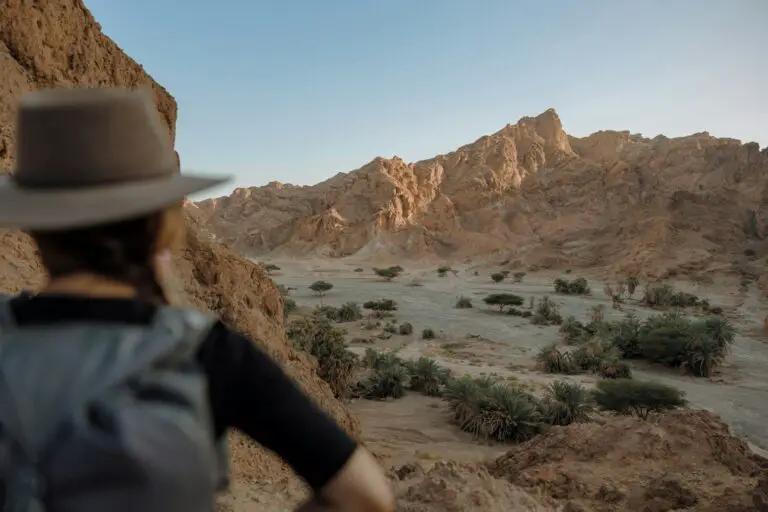Hiking can be a thrilling adventure, but it’s also a test of endurance and survival skills. As an experienced hiker, I’ve faced my fair share of challenges on the trails. In this article, I’ll share my top tips on how to survive a hiking trip.
From packing the right gear to navigating tricky terrains, I’ll walk you through the essentials. Whether you’re a seasoned hiker or a first-timer, this guide will equip you with the knowledge to tackle your next trip with confidence.
So, let’s dive in and uncover the secrets to a successful and safe hiking expedition. Trust me, with the right preparation and mindset, you’ll not only survive your hiking trip, but you’ll also thoroughly enjoy it.
Choosing the Right Hiking Trail

When it comes to surviving a hiking trip, the choice of trail is crucial. It’s not simply about choosing a path that’s visually appealing or popular among other hikers; it’s about finding a trail that matches your physical capacities and experience.
If you’re new to hiking, don’t jump straight into difficult terrains. As an expert hiker, I started with small, local trails before progressing to bigger challenges. Research about the distance, elevation, and conditions of the trails and compare them with your level of fitness and experience.
Park websites, hiking apps, and guidebooks provide useful insights about trails. They often offer data like:
- Elevation profiles
- Distance
- Trail conditions
- Difficulty level
- Estimated time
Don’t shy away from asking other hikers about their experiences. Local hiking groups and online hiking forums are valuable sources of firsthand knowledge.
Another key aspect is predicting weather conditions. Unpredictable weather can turn an easy trail into a challenging ordeal. When hiking in cooler climates, trails can get slippery and risky. High-altitude treks might have sudden temperature drops. Always check the weather forecast before setting out and be ready to turn back if conditions worsen.
Lastly, pay attention to local flora and fauna. Some areas might host wild animals or plants that could pose a risk. Always familiarize yourself with local guidelines and warnings.
The optimal hiking trail isn’t necessarily the most challenging or the most scenic; it’s the one that best fits your abilities and expectations. Through careful planning and research, you can ensure a safe and enjoyable hiking adventure.
Essential Gear for a Hiking Trip
Next up in our hiking survival guide is the indispensable step of packing the right gear. No matter how physically fit or well-informed you are about the trail, without the proper equipment, even the most experienced hiker can easily find themselves in a perilous situation. Here, I’ll highlight the critical gear you should have on your list.
First on the list are hiking boots, the cornerstone of any hiking trip. Hiking boots should provide both comfort and durability, accommodating long distances and rough terrains while protecting your feet.
A good hiking backpack is another must-have item. Crucial features to consider include its size, comfort, weight, and weather resistance. It’s important to choose a backpack that can reliably hold your gear and withstand the outdoor elements, yet it shouldn’t be overly burdensome on your back.
The importance of layered clothing can’t be stressed enough. It always pays to prepare for weather fluctuations and sudden drops in temperature. Base layers, mid-layers, and outer layers all serve a unique purpose in maintaining body temperature and should be included in your checklist.
Don’t overlook the need for a detailed map and a compass. Even in this age of smartphones and GPS, these traditional tools offer an invaluable safety net in the wilderness, operating without batteries or signal.
While this isn’t an exhaustive list, it includes the main items to consider for most trips. In the next part, we’ll move on to discuss food and water needs for your hiking excursion.
Packing and Storing Food and Water

As we move on, it’s important to focus on the significance of proper food and water management during a hike. Just like all your other hiking gears, these two are also essential survival items.
Step 1: Choose Your Food Wisely
When it comes to food, there’s a need for careful selection. Aim at packing lightweight, non-perishable foods, high in energy. Examples include:
- Dehydrated meals
- Trail mix
- Energy bars
- Nuts and dried fruits
- Whole grain crackers or rice cakes
Avoid anything that’s likely to spoil without refrigeration. Remember food safety.
Step 2: Packing Your Food
After selecting the right food, packing it appropriately is the next step. Opt for leak-proof and airtight containers to avoid spills and food spoilage. Alternatively, packing in reusable ziplock bags can save space and weight.
Step 3: Hydrating
I can’t stress enough the importance of staying hydrated while on a hike. It can make a world of difference to your overall well-being on the trail. Always pack enough water, but also consider the weight.
For shorter trips, packing a few liters of water is typically sufficient. For longer hikes, you’ll need a sustainable water source. I’d suggest investing in a portable water filter or purification tablets to ensure safe drinking water throughout your hike.
Moving forward, let’s talk a bit about the best ways to navigate during a hike – using GPS devices and traditional map and compass reading techniques.
Navigation and Trail Markings
Knowing your way around wilderness trails is the key to a successful hiking trip. Navigating through the wild involves more than knowing North from South. Remember, losing your way can lead to dangerous situations.
Contrary to what some may believe, relying on GPS technology isn’t the only option. Yes, handheld GPS devices and smartphones are pretty nifty. They can track your precise location, suggest the best routes and provide information about terrain. But what happens when batteries die, signals fade or equipment fails? You need a backup plan.
That’s where trail markings and traditional map and compass reading techniques come in. These methods have stood the test of time and can be your lifesavers in the wild.
Trail markings, also known as blazes, may seem like random signs painted on trees or rocks. But they’re what keep you from straying off the path. Blazes are usually found at regular intervals along a route, offering visual cues about your current course and next steps. There are different types of blazes – ranging from colored marks to carved symbols – each with its own meaning. It’s essential to familiarize yourself with these symbols before you hit the trail.
Complementing blazes, a map and compass are indispensable tools for maneuvering your way through unfamiliar territory. They work regardless of your gadget’s battery status or network availability. Decoding a topographic map might seem daunting at first. Don’t worry; mastering the basics of contour lines, scales and symbols doesn’t demand geography expertise. Likewise, understanding a compass isn’t rocket science. If you know what the cardinal directions are, you’ve already won half the battle.
Remember my rule of thumb: always pack a physical map and compass in your hiking gear. Not only do they weigh next to nothing but they are also worth their weight in gold if you get lost.
You might be thinking, “But I don’t know how to read a map or use a compass!” No worries. In the next part of this guide, I’ll share some easy-to-follow instructions and tips. Stick around, there is much more to learn.
Dealing with Various Weather Conditions

Onward with our hiking survival guide, let’s now focus on one of the most unpredictable aspects of any outdoor adventure: the weather. Understanding and preparing for various weather conditions is an absolute must for every hiker, experienced or not. Don’t just rely on daily weather forecasts. Get to know what signs to look out for, and how to respond if nature decides to surprise you.
Managing Unexpected Rain
Rain is a common occurrence in most hiking trails, and it shouldn’t be ignored lightly. First off, make sure your gear is rainproof. This includes your backpack, tent, and clothing. Most importantly, ensure your boots are waterproof to avoid foot problems associated with extended exposure to dampness. Additionally, bring along an easy-to-assemble rain shelter for those unexpected downpours.
Remember, with rain comes potential for hypothermia, slippery trails, and floods. Familiarize yourself with these risks and how to handle them before setting off for your hike.
Being Prepared for Cold Weather
Cold trails, especially those involving snow and ice, require a different set of gear and skills from the usual hikes. A good start is layered clothing and insulated, waterproof boots. Here, thermal underwear, insulating mid-layers, and outer layers that offer both wind and water resistance become vital.
In such hikes, know that altitude sickness becomes a real concern. Learn the signs, symptoms, and necessary precautions. It’s also worthwhile to invest in gear such as crampons and ice axes for increased safety.
Handling Heat and Sun
Then there’s the other extreme: the scorching sun. In hot weather, you’ll want to maximize on sun protection. A good sun hat, sunscreen, and sunglasses are essential. Additionally, planning hikes early in the morning or later in the evening when the sun isn’t at its peak helps maintain your energy and hydration levels. Remember to hydrate frequently and take breaks in shaded areas every so often. It’s equally vital to recognize signs of heat-related issues such as exhaustion and heat stroke, and to respond accordingly.
Next, we’ll cover a crucial part of hiking safety that cannot be overlooked: dealing with wildlife encounters.
Techniques for Hiking on Different Terrain
Mastering navigation and weather management is a must, but let’s move to another key aspect of hiking survival – understanding different terrains. On your hikes, you’re likely to come across a variety of landscapes. That’s why familiarity with hiking techniques specific to different terrains is vital for your safety and ease of travel.
Firstly, let’s take rocky terrains. They present obvious challenges from sharp, jagged surfaces and an increased likelihood of slipping. It’s important to remember that balance is key. Use your whole body, and don’t over-rely on your legs. Spread your weight evenly and use hiking poles to help maintain stability.
Next, we have sloping terrains. When you’re navigating steep slopes, always take zigzag paths instead of going straight up or down. It reduces the risk of sliding or falling. Another tip here is to lean forward when heading uphill and lean back when going downhill to maintain balance.
Moving on to river crossings. They could be exciting yet tricky parts of your journey. Always check the depth of the water before stepping in and untie your shoes to prevent them from being swept away if you fall.
Then there’s the desert terrain. Heat exhaustion is a real threat that comes with this inhospitably beautiful landscape. Drinking lots of water is crucial, along with covering yourself fully to protect against the harsh sun and sand. Watch out for signs of heatstroke like dizziness and extreme fatigue.
Lastly, snowy terrains require careful navigation. Recognize avalanche-prone areas and plan your route to avoid them. Equip yourself with sunglasses to avoid snow blindness and remember that walking in the snow requires more energy, so take regular breaks.
As you can see, specific techniques are needed for different terrain types. Absorb these pointers, make them part of your hiking routine, and you’ll ensure your safety while boosting your enjoyment of the great outdoors. The article continues with important information regarding encounters with wildlife along the trails.
Managing Clothing and Layering

Clothing might seem like one of the simplest aspects of packing for a hike; throw in a few of your favorite outdoor apparels, and you’re good to go, right? I’m afraid it’s a bit more complicated than that. What you wear on the trail could potentially affect your comfort, performance, and even safety during a hike.
The key is layering. Here’s an effective three-layer system I recommend:
- Base Layer: The base layer is the essential one. It’s in contact with your skin, so it should be made of moisture-wicking fabric to keep you dry. Materials like merino wool or synthetic fibers work best at this.
- Middle Layer: This layer is all about insulation. It’s what keeps you warm on those windy summits and during chilly dawns or dusks. Go for a fleece or lightweight down jacket as your middle layer.
- Outer Layer: Also known as the shell layer, its job is to protect you from rain, wind and snow. Therefore, it should be waterproof, yet breathable enough to avoid sweat build up. Look for jackets with a term ‘waterproof breathable’ written on them.
On summer hikes, it might seem needless to pack a middle or outer layer, but remember mountain weather is unpredictable and can change quickly.
An another notable point is matching your socks and shoes. While hiking boots are indispensable, the socks you wear are equally, if not more, important. Opt for quality hiking socks made of wool or synthetic fibers. Avoid cotton; it holds moisture, which can lead to blisters.
You need to be prepared for a variety of weather conditions, as being caught unprepared can be dangerous. The elements have claimed lives before, and they will not hesitate to claim more – survival on the trail is not a game.
Recognizing the importance of clothing and layering while hiking is crucial. So… you’ve packed your clothing and are now ready to hit the trail. The journey is not over yet, as there is more to be learned about surviving the hiking experience. The next section will tackle the ins and outs of dealing with wildlife encounters.
Staying Safe from Wildlife
When embarking on a hiking adventure, wildlife encounters can add an exciting, yet unpredictable flavor to the journey. It’s key to remember that we are visitors in their territory. Accordingly, understanding how to steer clear of any potential danger is a vital part of responsible hiking.
Let’s break it down with safe practices and protocols for wildlife encounters:
- Avoid feeding: Never feed wild animals. It disrupts their natural feeding habits and can make them too familiar with humans, leading to dangerous situations.
- Maintain distance: Always stay at least 150 feet away from wild animals. Even herbivores like deer can pose a threat if they feel cornered or threatened.
- Make noise: If you’re hiking in bear country, it’s advisable to make noise to alert bears to your presence. They typically avoid humans, and a surprise encounter can be dangerous.
- Secure your food: Animals can smell food from miles away. Always store your food, trash, and scented items in bear-resistant canisters or hang them from trees in sacks to avoid attracting wildlife to your campsite.
- Invest in bear spray: This strong, wind-blown pepper spray is a good defense if a bear approaches you. It’s good to remember though that prevention is always the best policy.
It’s critical, however, to emphasize that encounters can vary, and we’ll need to adapt our behavior depending on the species we encounter. Trail-specific and locale-specific tips based on the common wildlife found are valuable for preparation.
So, moving forward, we’ll delve into some common types of wildlife in popular hiking regions and the best strategies to safely observe these animals while maintaining our distance. It promises to equip hikers with the knowledge to handle any unpredictable wildlife moments.
First Aid and Emergency Preparedness
When you’re out on hiking trips, being prepared for emergencies is crucial. One of the essential gear that I can’t emphasize enough is a well-packed first aid kit. Your kit should include essentials like bandages, antibacterial ointments, medical tape, pain relievers, and any necessary prescribed medications. For unexpected incidents, it’s also wise to carry tweezers for splinters or ticks, a venom extractor for snakebites, and an emergency blanket as well.
Let’s not neglect the value of having first aid knowledge. It’s one thing to possess a first aid kit; it’s another to know how to use it efficiently. You should at least be familiar with basic procedures such as dressing a wound, performing CPR or managing a snakebite. Various organizations offer first aid courses, some specifically catered to outdoor enthusiasts.
An often overlooked yet vital equipment is the emergency whistle. It might seem insignificant, but this small tool can make a big difference in alerting others or scaring away potential wildlife threats. Remember, three sharp blows of a whistle is universally recognized as a distress signal.
Equally important is a rescue beacon or a GPS device. Especially when trekking in remote areas, being able to signal for help could be a lifesaver. Devices like PLBs (Personal Locator Beacons) or satellite messengers can alert rescue agencies to your location, even in areas without mobile phone coverage.
Yet, no equipment is fully beneficial without a thing called presence of mind. In emergencies, it’s crucial not to panic. High stress and fear impair judgment, making you more prone to risk and injury. Therefore, practicing mindfulness to stay calmly focused and alert is of utmost importance.
In the following section, we will further probe into the realm of hiking. Get ready to explore how to handle the unexpected while on your nature journey! Feel fearlessly equipped knowing you’ve done all you can to prepare for any emergency situation.
Conclusion
As we’ve journeyed through the essentials of surviving a hiking trip, it’s clear that preparation is key. Packing the right gear, managing food and water, and understanding navigation are all crucial.
In the face of the unpredictable, I can’t stress enough the importance of a well-stocked first aid kit and the knowledge to use it. Emergency tools like whistles, rescue beacons, or GPS devices could be lifesavers.
Remember, it’s not just about surviving, but also enjoying the journey. So, equip yourself with the right knowledge and gear, stay calm in emergencies, and you’re all set to conquer the trails. Here’s to safe and memorable hiking adventures!

